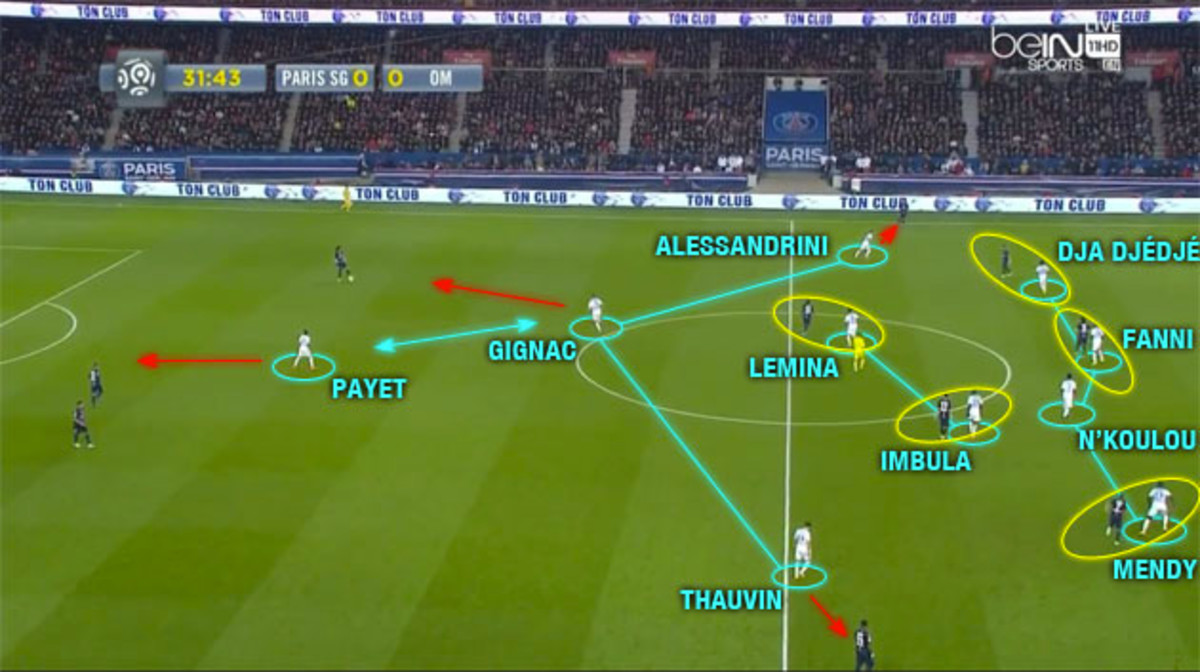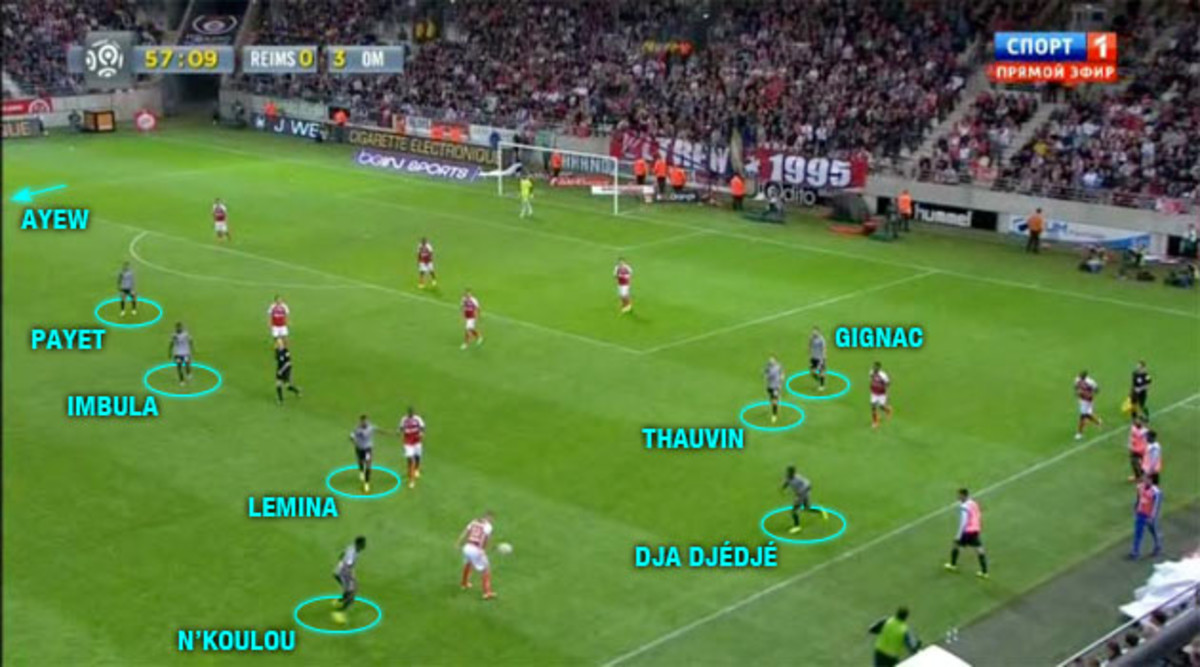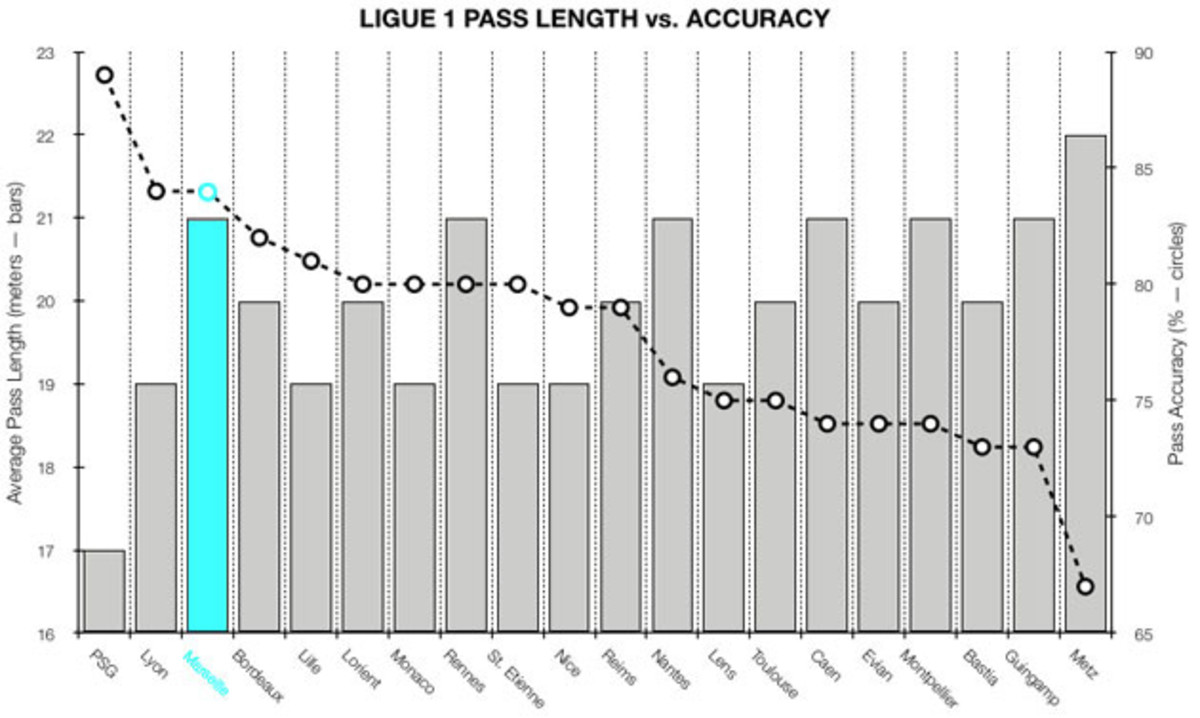Bielsa's tactics have Marseille competing for French glory again

The revolutionary Marcelo Bielsa has Olympique de Marseille at the top of the Ligue 1 table just over half a calendar year after finishing sixth. Hired in May, he was tasked with restoring OM to the glory it hasn’t seen since winning the league in 2009-10.
Bielsa, 59, brought with him his uncompromising style and unique philosophy that has influenced some of the world’s top tacticians, including Pep Guardiola, who called him “the best coach on the planet” in 2012. When Bielsa and Guardiola coached against each other in La Liga, Guardiola spoke of his intrigue at Athletic Bilbao’s almost militaristic sense of work rate.
“Bielsa’s teams are very aggressive. They don’t let you breathe,” Guardiola said. “Seven arrive in the penalty area, they lose the ball and 11 defend. Their games are all up and back, up and back, without stopping.”
The eccentric Argentine, nicknamed El Loco, epitomizes the obsessive footballing mind, preparing in minute detail for each match and training session, speaking at length in press conferences and to his players. He gives long lectures, sometimes in the middle of a training exercise, and holds hours-long video sessions, at times more than once a day.
In training, he barks orders non-stop and demands 100 percent effort, focus and intensity from his players at all times. He might be loco, but as Bielsa himself once pointed out, “A man with new ideas is mad — until he succeeds.”
Things didn’t look too bright at the start of the season, when Bielsa laid into the Marseille board and president Vincent Labrune, claiming he “made me promises that he knew were untenable.” This was early September and one of the few times Bielsa had spoken at length with the press.
The honesty he provides is rare, as is his level of meticulousness and his nervous tics. The madness and his method are inseparable, and once he wins over a team, the players will do anything for him and defend him to anybody who will listen.
“The workouts are intense but enlightening, technically and tactically,” leading scorer André-Pierre Gignac said. “He knows everything to the smallest detail. … I glanced at his training schedules: there are hundreds of them, and every one featured games he analyzed. He taught us a vibrant, real type of football.”
Atlético Madrid manager Diego Simeone was similarly full of praise in his book, Partido a Partido, released in October.
“He knows how to get the most out of each player,” Simeone wrote. “When you've been in his team, you come away from it another player.”
Manchester City finds way through, Barca tops PSG in Champions League
Little squad rotation and no European competition helped Marseille develop impressive team chemistry in a short period of time.
OM started the season with an away draw to Bastia and home loss to Montpellier; since then, it only lost to Lyon and Paris Saint-Germain, rattling off an eight-game winning streak that spanned two full months in league play.
Marseille has scored 36 goals to lead Ligue 1 and sits tied for second with Barcelona among the teams in Europe’s top five leagues (Real Madrid is the runaway leader in that category with a staggering 51 goals in 14 games).
Bielsa was known for his radical 3-3-1-3 system with the Chilean national team and Athletic Bilbao. His Marseille team has played it on several occasions, but Bielsa has generally preferred a 4-2-3-1 in France. While the numbers in each line have changed, the overall philosophy remains the same.
The most obvious characteristic of any Bielsa team is its work rate and concentration of numbers without the ball, but it’s not just about full-out pressure. It’s about creating favorable match-ups to win the ball back as quickly and as high up the field as possible.

It’s about intelligent positioning as much as the work rate: midfielders match up one-on-one, leaving no easy outlet to play forward. One defender remains free in the back, which is why Bielsa has preferred playing four defenders to three in a Ligue 1 with speedy wingers and three-forward sets.
Marseille responds to a series of triggers to press the opposition. The exact number is difficult to know without being privy to what a coach tells his team in the privacy of its training ground, but it’s probably a higher number than most imagine. After all, Bielsa once said, “There are 36 different forms of communicating through a pass.”
From the outside, OM’s defensive system seems chaotic at times, chasing all over the opposition half. That sense of chaos plays into Marseille’s hands, as opponents can’t find time to build out of the back or connect simple passes through the pressure, instead having to hoof clearances that Marseille can latch onto more easily.

If Marseille can regain possession in midfield or higher, it’s straight to goal (or droit au but, as is the club motto). Transitions happen fast, and OM tries to play vertical as early and often as possible, usually through target man Gignac.
He has freedom in the final third, as does attacking midfielder Dimitri Payet in the No. 10 role. They interchange and drift to either side, staying highest if Marseille retreats to defend in its own half. (With their partnership, Marseille’s formation sometimes looks like 4-4-2.)
Champions League: Liverpool crashes out, Aaron Ramsey stars for Arsenal
All wingers on the squad — Florian Thauvin, André Ayew, Romain Alessandrini and Abdelaziz Barrada have played there the most this year — are dynamic with the ball at their feet and cover ground quickly without it as well. They provide support and service on the break for the central players. Thauvin has been the most consistent of the wide players, as Ayew and Alessandrini have suffered through injuries.
Fullbacks Brice Dja Djédjé and Benjamin Mendy run the length of the touchline. They personify Bielsa’s requisite defensive work rate, chasing down second balls and tackling ferociously before distributing to the players in front of them and sprinting to join the attack.

It’s important to note that the vertical nature of Marseille’s attacks doesn’t mean it plays hopeful long balls. In fact, OM is tied for second in Ligue 1 in both average pass length, at 21 meters, and overall passing accuracy, with an 84 percent success rate.
If it has to retreat into its own half to win the ball, Marseille can also build out of the back. The double pivot of Mario Lemina and Giannelli Imbula controls the middle of the field effectively, and goalkeeper Steve Mandanda is comfortable playing passes of all lengths and difficulties from the very back.
From its 4-2-3-1 starting point, OM usually builds out in a 2-3-2-3 shape, with Imbula dropping just ahead of the center backs. The fullbacks advance, and the two creative midfield players fill in gaps between the three forward-most players.
Inside the SuperClubs: Bayern Munich
Imbula, who played five games in France’s failed bid to qualify for the 2015 European Under-21 Championship, has proven to be OM’s most indispensable player in the back half of the team.
When he was unjustly sent off at 1-0 down to PSG in early November for an innocuous tackle, it effectively opened the team for a killer second goal to lose 2-0.
This Marseille team has shown more versatility and flexibility in its tactics than Bielsa’s past teams, when he would usually play the same shape and style no matter the opponent. The big question remains, as it does with all his teams, how long will the Bielsa effect last?
It’s a difficult style to sustain, as players can’t normally function at 100 percent intensity and effort for an entire season without risk of fatigue or injury. A Bielsaist would say the problem is not in the coaching, but that nobody is perfect enough to play the way he demands.
Bielsa’s philosophy is perhaps better suited to coaching a national team, with its fewer contact periods per year. At the 2014 World Cup, Jorge Sampaoli continued Bielsa’s work with Chile, down to the three-back system of play, that saw La Roja qualify for the 2010 tournament and advance to the round of 16 out of a group that included Spain and Switzerland. Under Sampaoli this past summer, Chile knocked out Spain in the group stage and fell to Brazil in a heartbreaking PK shootout in the round of 16.
Bielsa has a two-year contract with Marseille, but he and the board got off to a rocky start, as he detailed in his September press conference. The revolution is proceeding much slower than he would like because he doesn’t have the totalitarian control he desires.
Just over half a season remains in the first year of the Bielsa Provençal experiment. Marseille is off to a good start, leading powerhouse PSG at the top of Ligue 1, but past indications are that the most interesting part of the season is yet to come.
